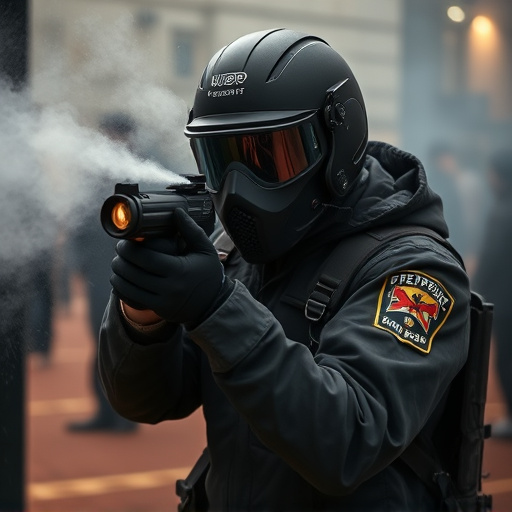Pepper spray, a powerful self-defense tool, temporarily incapacitates attackers by inducing a burning sensation through capsaicin from chili peppers. It doesn’t blind users but reduces visibility for 15 minutes to an hour. Responsible use involves understanding its limitations, safe application techniques (holding at arm’s length and targeting face/eyes), and legal regulations. Avoid unauthorized possession or misuse, as it carries severe legal penalties; train regularly for effective deployment in critical moments.
“Aerosol spray defense, particularly pepper spray, offers individuals a powerful tool against attackers. This article breaks down the effectiveness of pepper spray, how it temporarily disables assailants by irritation and pain, and its active ingredients. We’ll explore safe use techniques to maximize its defensive potential, including application methods that can prevent serious injury. Additionally, legal considerations and best practices for carrying aerosol spray will equip readers with knowledge, ensuring they stay within the law while safeguarding themselves.”
- Understanding Pepper Spray: How It Works and Its Effectiveness
- Safe Use and Application Techniques to Maximize Defense
- Legal Considerations and Best Practices for Carrying Aerosol Spray
Understanding Pepper Spray: How It Works and Its Effectiveness
Can pepper spray blind you? Pepper spray, also known as oleoresin capsicum (OC) spray, is a non-lethal self-defense tool designed to temporarily incapacitate an attacker. It works by causing a burning sensation in the eyes and respiratory system when the spray comes into contact with them. The active ingredient, capsaicin, is derived from chili peppers and is responsible for the intense irritation. This irritant triggers nerve endings, leading to a strong reaction that can last anywhere from 15 minutes to an hour.
While pepper spray is highly effective in disorienting and temporarily disabling an aggressor, it’s a myth that it can blind you. The spray only causes temporary blindness or reduced visibility, allowing users to escape or seek help. However, direct exposure to the face could result in significant discomfort and breathing difficulties. It’s crucial to understand its limitations and use it responsibly as a last resort for self-defense.
Safe Use and Application Techniques to Maximize Defense
When using aerosol spray for defense, it’s crucial to understand safe application techniques to maximize its effectiveness while minimizing risks. Pepper spray, known for its ability to disable attackers temporarily, should be deployed strategically. Aiming for the face and eyes can significantly impair an attacker’s vision, giving you precious time to escape or summon help. However, be mindful that pepper spray can cause temporary blindness, so it’s essential to use it responsibly and only as a last resort.
Proper technique includes holding the canister at arm’s length, targeting specific areas like the face, nose, and eyes, and releasing the trigger in quick bursts. Training with a mock scenario or seeking advice from law enforcement agencies can help individuals learn safe handling practices. Remember, understanding the mechanics of the spray and knowing when to deploy it accurately are key to ensuring personal safety without causing unnecessary harm.
Legal Considerations and Best Practices for Carrying Aerosol Spray
When considering aerosol spray, or pepper spray, as a defense mechanism against attackers, it’s crucial to understand the legal implications and best practices that come into play. The use of such devices is regulated by laws that vary widely depending on your location, with restrictions on who can carry them and under what circumstances. It’s essential to check local legislation to ensure compliance; unauthorized possession or misuse could result in severe penalties.
Best practices dictate responsible handling and awareness of range limitations. Pepper spray can cause temporary blindness, so it should be used as a last resort when facing an imminent threat. Users must also consider the potential for wind to carry the spray back towards them, which could exacerbate the situation. Regular training and familiarization with the device are vital to ensure effective deployment in critical moments.
Pepper spray, while not a guarantee of complete protection, offers a powerful non-lethal defense option against attackers. Understanding its functionality, proper usage techniques, and legal considerations empowers individuals to make informed decisions about self-defense. Remember, awareness and preparation are key; but always prioritize safety and only use aerosol spray as a last resort. Be aware that pepper spray can cause temporary blindness, so clear vision may be compromised during and after use. Stay informed, stay safe, and be ready.
